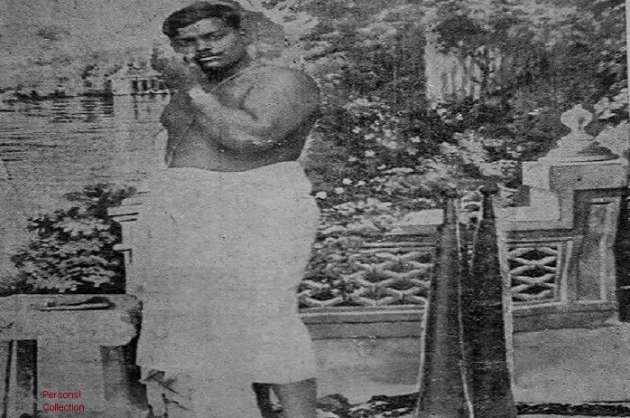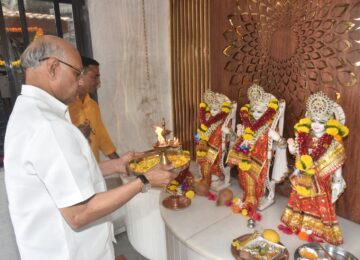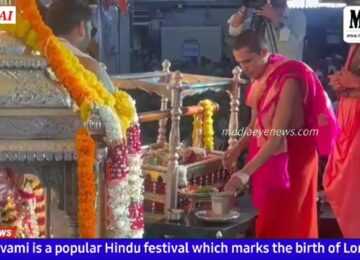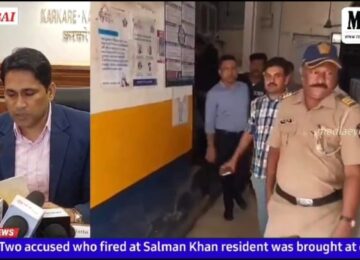Anupama Nair
www.mediaeyenews.com
“But the heart, the eye, the yet deeper heart —
Still ablaze for the Beloved, their turmoil shines.
In the lantern by the road the flame is stalled for news:
Did the morning breeze ever come? Where has it gone?
Night weighs us down, it still weighs us down.
Friends, come away from this false light. Come, we must
search for that promised Dawn”
But the promised Dawn did finally come after nearly 200 years of colonial rule. We lost millions of Bharat Ma’s sons and daughters starting from Siraj-ud-Daula (Battle of Plassey, 1757), to Mangal Pandey, Rani Laxmi Bai (1857) and finally Bhagat Singh, Rajguru, Sukhdev, Chandrashekhar Azad, Veer Savarkar and lastly the man who said “Give me blood, I will give you freedom”—Netaji.
As Rousseau, during the French Revolution said “Man is born free yet he is in chains”, it was true for India. The desire to be free is the dream of every human, but during the Raj it was a rare commodity. For a century we were ruled by a Company called East India Company, who let loose a reign of terror. It was truly a black era. But the Revolt of 1857 ended the Company rule and India was ruled by the British Government. But the reign of terror did not end. All voice of freedom was suppressed.
In such an India was born a true son of Bharat Ma in 1906, in Bhabria near Prayag Raj in United Provinces, British India. His parents were Sitaram Tiwari and Jagrani Devi. He was born as Chandrashekhar Tiwari, and he was sent to Kashi Vidyapeeth as his mother wanted him to be a Sanskrit scholar. He was drawn to the Freedom struggle in 1921 when the Non-Cooperation Movement (started by M.K. Gandhi) was going on. It is said he was arrested for his participation in the Movement. When the 15-year-old boy was presented before the district magistrate Justice Tomson Kregat a week later, he gave his name as "Azad" or the Free, his father's name as "Swatantrata" or Independence and his residence as "Prison". The infuriated magistrate ordered him to be detained for 23 weeks and ordered that he be punished with 15 lashes a day. That was the birth of Chandrashekhar Azad the Revolutionary.
When M.K Gandhi suspended the Non-Cooperation Movement in 1922 for no particular reason, Azad like Bhagat Singh was disappointed. He met a young revolutionary, Manmath Nath Gupta, who introduced him to a great Revolutionary Ram Prasad Bismil, the founder of the Hindustan Republican Association (HRA), a revolutionary organization. He then became an active member of the HRA and started to collect funds for HRA.
Azad made Jhansi the hub of HRA for some time. He used the forest of Orchcha, near Jhansi, as a site for his shooting practice trained other members of his group as he was an expert in the shooting. He built a hut near a Hanuman Temple and lived there using another name Pandit Harishankar Brahmachari. He made many friends in the village, some of who contributed generously to HRA. While he was living in Jhansi, he also learned to drive a car at the Bundelkhand Motor Garage
He was then involved in the Kakori Train Conspiracy. The robbery was conceived by Ram Prasad Bismil and Ashfaqullah Khan as the organization needed money for the purchase of weapons. Bismil and his party decided to plunder a train of the Northern Railways. The robbery plan was executed by Ram Prasad Bismil, Ashfaqulla Khan, and their friends. It is believed that they looted that specific train because it was supposedly carrying the money which belonged to the Indians and was being transferred to the British Government treasury. They looted 8000 Rs and escaped to Lucknow. The objectives of this robbery were to fund the HRA with funds stolen from the British administration and to garner public attention by creating a positive image of the HRA among Indians.
He was a close friend of Bhagat Singh, Raj Guru and Sukhdev and changed the name of HRA into the Hindustan Socialist Republican Association(HSRA) in 1928. 1928 was also the year of the Simon Commission, under John Simon who was appointed to study the implementation of the Government of India Act 1919, also called the Montagu-Chelmsford Reforms (advocated the need to emancipate the local governments and legislatures from central control). Lala Lajpat Rai, a freedom fighter and educationist (opened National College in Lahore, where Bhagat Singh and Sukhdev studied) held a rally in Lahore protesting against the Simon Commission with placards “Simon Go Back”. The British police began to lathi-charge and unfortunately, Lalaji breathed his last. Bhagat Singh and his fellow revolutionaries decided to avenge the killing of Lalaji and decided to kill the officers involved in the Lathi-charge. Bhagat Singh, Rajguru and Sukhdev shot British police officer John Saunders eight times from within the DAV college in Lahore. Azad helped them and shot dead Charan Singh, the British-employed Indian police constable who chased Bhagat Singh and Rajguru as they fled and entered the college after killing Saunders. However, the person they intended to kill was not Saunders but Superintendent of Police James Scott who had ordered his men to lathi-charge protesters leading to the death of Lalaji. Bhagat Singh, Rajguru and Sukhdev who confessed their brave act was hanged on March 23, 1931, in Hussainwala, Lahore and thus beloved sons of Bharat Maa, gave their lives for an Independent India. They were only 23 years old.
Now let me come back to the story of Azad. Azad managed to elude the police for some time. Jawaharlal Nehru in his autobiography stated he met Azad “in early 1931 to enquire whether under the discussions being held that resulted in the signing of the Gandhi-Irwin Pact, the revolutionaries could expect a fair deal leading to their honorable rehabilitation”.
Determined never to be captured by police, Azad was constantly on the move. On February 27, 1931, Azad arranged to meet a revolutionary at Alfred Park in Prayag Raj. He was betrayed to the police, who surrounded him as soon as he entered the park. A gun battle ensued, in which two police officers were wounded. After a long shootout, holding true to his pledge to always remain Azad and never be captured alive, he shot himself with his last bullet.
The body was sent to Rasulabad Ghat for cremation without informing the general public. When people came to hear about their beloved leader’s death, they surrounded the park where the incident had taken place and chanted slogans against British rule and praised Azad. Thus, another beloved son of Bharat Ma sacrificed his life to free his motherland as Azad once said “Aisi jawaani kisi kaam ki nahi jo apni matrbhoomi ke kaam na aa sake (what is the use of being a youth if you do not live for your motherland”. It is an idea I truly believe, as I have undertaken this mission to educate my country men about the true story of Independence and the many unknown who sacrificed their lives for their “watan or matrubhoomi”, so that we live in a free country.
To commemorate Azad, several schools, colleges, roads, and other public institutions across India were named after him. Many films have been made about Azad. Manmohan played Azad in the 1965 film Shaheed, Akhilendra Mishra in the blockbuster The Legend of Bhagat Singh and Raj Zutshi in Shaheed-E-Azam.
Our great Prime Minister Narendra Modi, who had earlier announced a year-long celebration of the 75th year of Independence called Amritotsav tweeted he was a futuristic thinker and dreamt of a strong and just India. “Remembering the valiant son of Bharat Mata, the remarkable Chandra Shekhar Azad on his Jayanti. During the prime of his youth, he immersed himself in freeing India from the clutches of imperialism. He was also a futuristic thinker, and dreamt of a strong and just India”. I agree to this and I have admired him from childhood. Vandemataram Azad, you will live in our memory forever.





























As usual an article with one more freedom fighter. Expecting many more such.
Great article reminding us of the hard fought independence and sacrifices of such immortal souls.
Woh jeevan kis kam ki jo matrubhoomi ka kam na aye. Bharat Ma tere saput hai Azad.
Great job Anupama and Media Eye. Please publish more articles like this.
Woh jeevan kis kam ka jo matroobhumi ka kam na sake. Very apt saying.
A life is useless if we do not use it for our country.
Azad is a great personality.
Great research work done.
Great son of Bharat Ma.
Great son of Bharat Ma.
Great son of Bharat Ma.
Great work done. Why are not such great people given Bharat Ratna?
Great article.
Great article.
Woh jeevan jis kam ki jo matrubhoomi ka kam mnna aye
Great son of Bharat ma
Great son of Bharat ma
I admire him a lot.
I admire him a lot.
I admire him a lot.